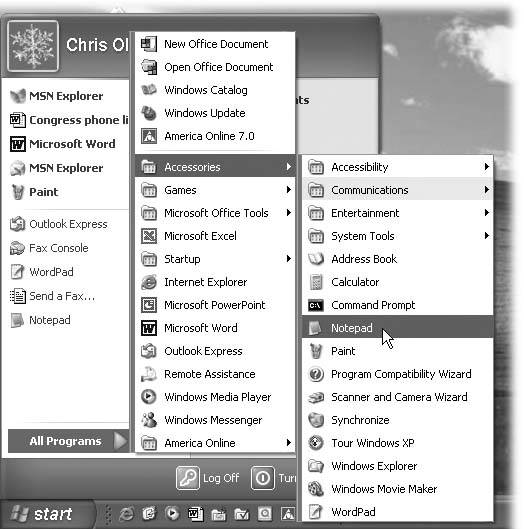About This Book
| Despite the many improvements in Windows over the years , one feature hasn't improved one iotaMicrosoft's documentation. Windows XP includes no printed guidebook at all. To learn about the thousands of pieces of software that make up this operating system, you're expected to read the online help screens. Unfortunately, as you'll quickly discover, these help screens are tersely written, offer very little technical depth, and lack examples and illustrations. You can't even mark your place, underline, or read them in the bathroom. In Windows XP, many of the help screens are actually on Microsoft's Web site; you can't see them without an Internet connection. If you're unable to figure out how to connect to the Internet in the first place you're out of luck. Not only that, the help screens don't exactly give you an objective evaluation of the system's features. They don't tell you how well something works, or if it's even the right feature for what you're trying to do. Engineers often add technically sophisticated features to a program because they can , not because you need them. You, however, shouldn't waste your time learning features that don't help you get your work done. The purpose of this book, then, is to serve as the startup manual that should have accompanied Windows XP. In these pages, you'll find step-by-step instructions for using every Windows feature you need to hit the ground running with your PC. Windows XP for Starters: The Missing Manual is the ideal first book for newcomers to the PC game as well as advanced beginners who want to learn more. If you're a seasoned Windows jockey, on the other hand, you may want to check out Windows XP Pro: The Missing Manual or Windows XP Home Edition: The Missing Manual , both of which are comprehensive guides to all the features of Windows XP, from basic to advanced. Note: This book is based on Window XP Home Edition: The Missing Manual (O'Reilly) and Windows XP Pro: The Missing Manual (O'Reilly). Those books are truly complete references for the Windows operating system, covering every feature, including geeky stuff like network domains, NTFS permissions, and other things you'll probably never encounteror even want to. But if you get really deep into Windows XP and want to learn more, either Windows XP Missing Manual can be your trusted guide. About the OutlineThis book is divided into five parts , each containing several chapters:
About |
EAN: 2147483647
Pages: 162
 These
These 